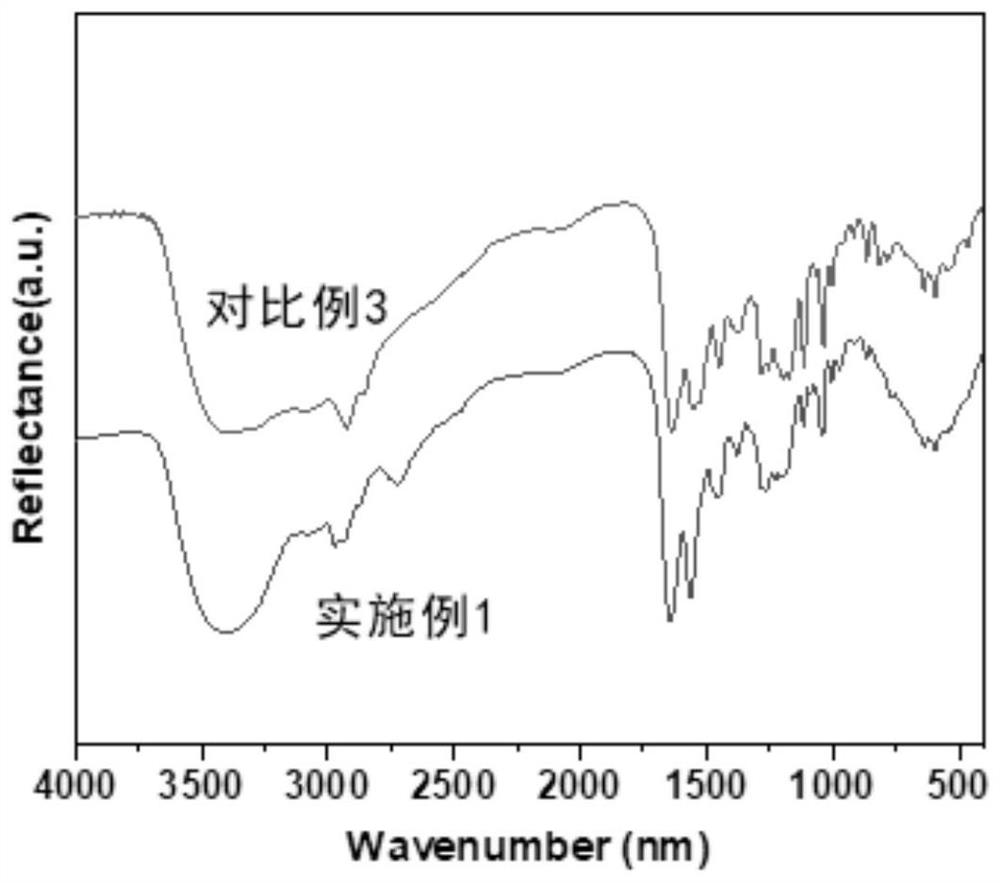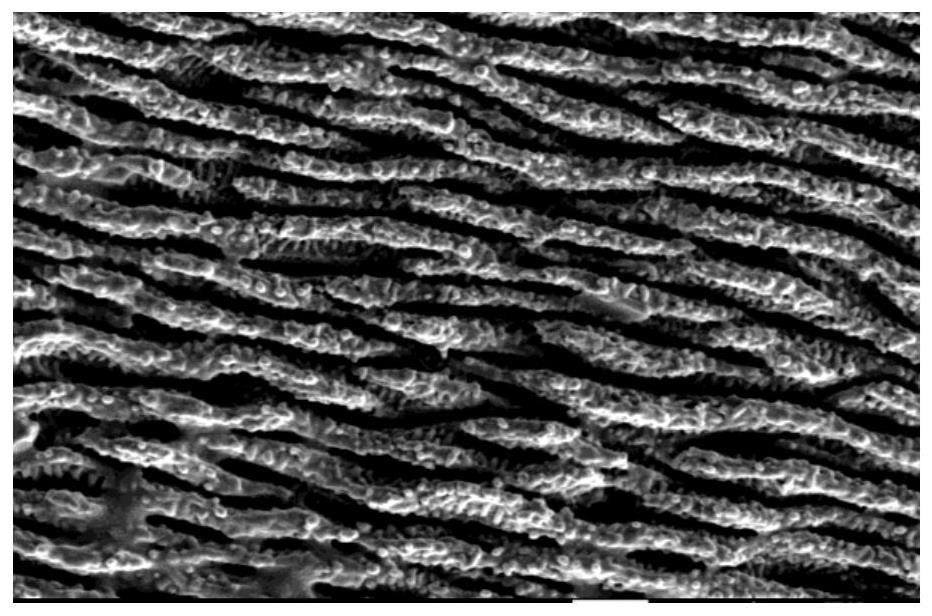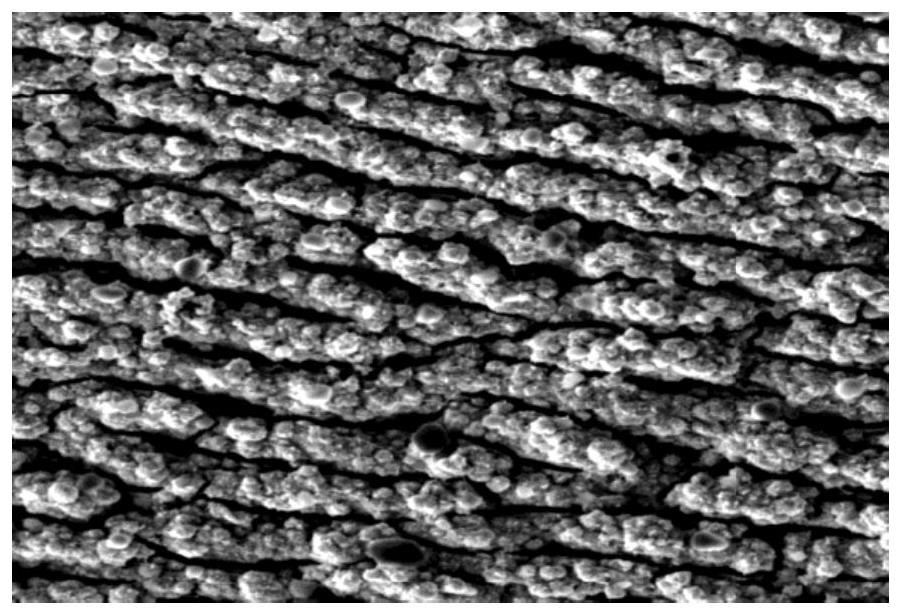Double-sided intravascular stent with nitric oxide catalytic release function and preparation method of double-sided intravascular stent
A technology of nitric oxide and vascular stents, which is applied in the field of double-sided vascular stents and its preparation, which can solve problems such as unstable coordination, insufficiently stable and long-lasting coatings, and easy reduction or even disappearance of the repair function of vascular stents.
- Summary
- Abstract
- Description
- Claims
- Application Information
AI Technical Summary
Problems solved by technology
Method used
Image
Examples
Embodiment 1
[0070] The present embodiment provides a double-sided vascular stent, the preparation method of which is as follows:
[0071] S100 , ultrasonically cleaning the stainless steel stent body with acetone, ethanol, and deionized water for 50 minutes, respectively, and drying it in a nitrogen environment to obtain a clean stainless steel stent body, which is ready for use.
[0072] S200 , engraving a bionic structure on the outer wall of the stent body in S100 by a femtosecond laser method to form a bionic pattern structure with a width of 800 nm, a length of 5 μm, and a depth of 10 nm.
[0073] S300, protecting the outer surface of the stent body in S200, placing the stent in a Tris-buffer buffer system with a pH value of 8.4, then adding 1 mg / ml dopamine solution to the system, reacting at 37°C for 24 hours, and then adding 1 mg / ml dopamine solution to the system. A 1 mg / ml polyallylamine solution was added, and the mixture was reacted at 37° C. for 12 hours to form an adhesive l...
Embodiment 2
[0078] The present embodiment provides a double-sided vascular stent, and its preparation method mainly has the following differences compared with Embodiment 1:
[0079] In step S200, a biomimetic pattern structure with a width of 750 nm, a length of 5 μm and a depth of 20 nm is formed; in step S300, a 1 mg / ml dopamine solution is added to the system, and the reaction is carried out at 37° C. for 24 hours; in step S500, using 0.5 mg / ml of heparin in water as the active drug.
[0080] In the double-sided vascular stent of this embodiment, the thickness of the adhesive layer is 10 nm, the molar ratio of primary amine groups and ortho-phenolic hydroxyl groups in the adhesive layer is 3;1, and the thickness of the grafted Cu-DOTA is 25 nm.
Embodiment 3
[0082] This embodiment provides a double-sided vascular stent, and its preparation method is compared with Embodiment 1, and the main differences are:
[0083] In step S200, a bionic pattern structure with a width of 700 nm, a length of 5 μm and a depth of 100 nm is formed; in step S300, a 1 mg / ml polyallylamine solution is added, and the reaction is carried out at 37°C for 12 hours; in step S500, 0.5 mg / ml rosmarinic acid in dimethyl sulfoxide (DMSO) solution was used as the active drug.
[0084] In the double-sided vascular stent of this embodiment, the thickness of the adhesive layer is 10 nm, the molar ratio of primary amine groups and ortho-phenolic hydroxyl groups in the adhesive layer is 5:1, and the thickness of the grafted Cu-DOTA is 25 nm.
PUM
| Property | Measurement | Unit |
|---|---|---|
| Width | aaaaa | aaaaa |
| Length | aaaaa | aaaaa |
| Depth | aaaaa | aaaaa |
Abstract
Description
Claims
Application Information
 Login to View More
Login to View More - R&D
- Intellectual Property
- Life Sciences
- Materials
- Tech Scout
- Unparalleled Data Quality
- Higher Quality Content
- 60% Fewer Hallucinations
Browse by: Latest US Patents, China's latest patents, Technical Efficacy Thesaurus, Application Domain, Technology Topic, Popular Technical Reports.
© 2025 PatSnap. All rights reserved.Legal|Privacy policy|Modern Slavery Act Transparency Statement|Sitemap|About US| Contact US: help@patsnap.com



